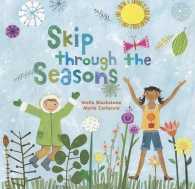Full Description
The Narrative Approach to Informed Consent: Empowering Young Children's Rights and Meaningful Participation is a practical guide for researchers who want to engage young children in rights-based, participatory research. This book presents the Narrative Approach, an original and innovative method to help children understand their participation in research. This approach moves away from traditional paper-based consent to tailor the informed consent process to the specific needs of young children. Through the Informing Story, which employs a combination of interaction, information and narrative, this method enables children to comprehend concepts through storytelling. Researchers are stepped through the development of an Informing Story so that they can deliver accurate information to young children about what their participation in research is likely to involve. To further inform practice, the book documents the implementation of the Narrative Approach in four case studies demonstrating the variety of settings in which the method can be applied.
The Narrative Approach to Informed Consent addresses the rights of young children to be properly researched, expands opportunities for their active and engaged research participation, and creates a unique conceptual ethical space within which meaningful informed consent can occur. This book will be an invaluable tool for novice and experienced researchers and is applicable to a wide range of education and non-education contexts.
Contents
Introduction.
Part 1: Theoretical and methodological underpinnings of the Narrative Approach
Chapter 1. Positioning the child as competent in the research process
Chapter 2. The conceptual model underpinning the Narrative Approach
Part 2: Developing and implementing an Informing Story
Chapter 3. Developing and delivering an Informing Story
Part 3: Adapting an Informing Story
Chapter 4. "Yes, he gets it". Enhancing 3- and 4-year-old children's reserach participation through a digitally interactive Narrative Approach Informing Story
Chapter 5. Using a Narrative Approach Informing Story to engage 4- and 5-year-olds in research in the context of a study on the use of an augmented reality sandbox to enhance spacial thinking
Chapter 6. Using a Narrative Approach Informing Story video to gain informed consent from 6-12-year-old children on their experiences in youth care
Chapter 7. Parental roles in supporting their young children's participation in research through a Narrative Approach Informing Story
Part 4: Future directions for the Narrative Approach
Chapter 8. Possibilities and challenges of the Narrative Approach
Chapter 9. Examples: The Toymaker Informing Story and the Toymaker Participation Story







